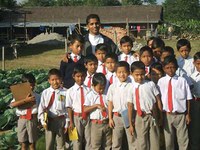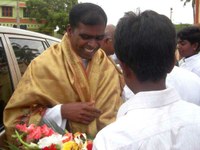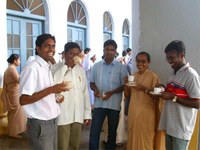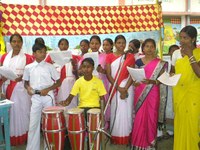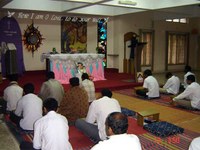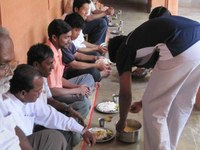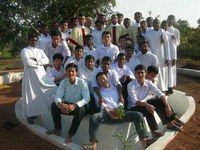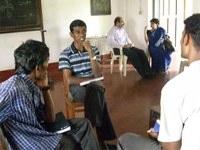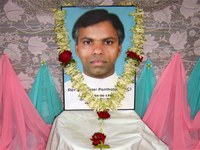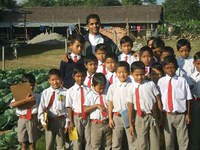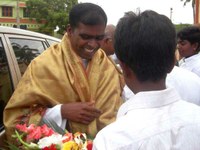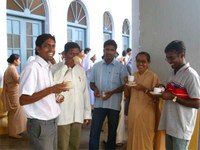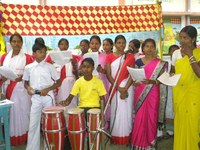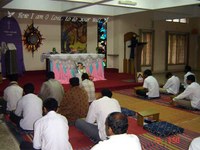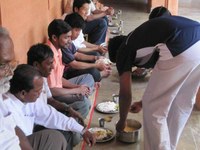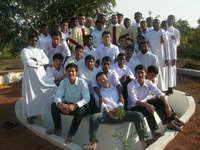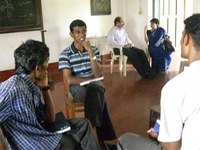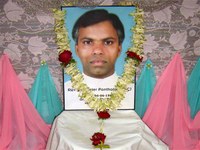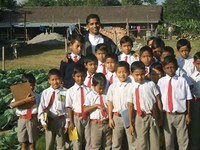Family News - 2010 June 14th
Contents
- A word from the Superior general
- Fr. Etchecopar wrote...
- Growth in Faith and in Life
- She who rescues from the waters (1)
- International session for final professions
- 5 minutes with Fr. Mario Sosa
- Solidarity Project: India 2010
- In memoriam: Fr. Henri Nadal (1920-2010)
- In memoriam: Fr. Beñat Segure (1933-2010)
- Betharram experience of China (6)
| PDF edition |
A word from the Superior general
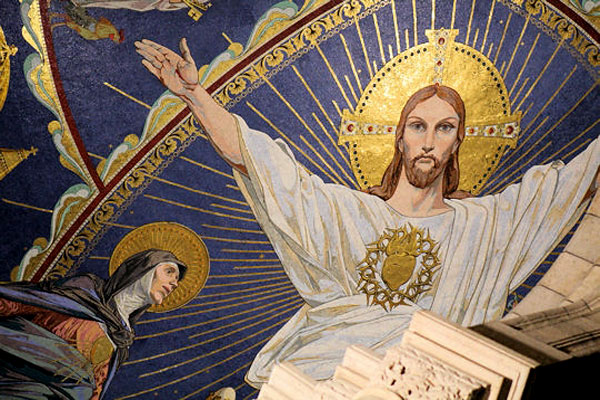
The Priestly Heart of Christ
Our beloved Pope Benedict XVI has focussed the Year of Priests on the Heart of Jesus, quoting the Cure dArs: The Priesthood is the love of the heart of Jesus. As religious of the Sacred Heart of Jesus we can identify with that spirituality. Our Father, St Michael Garicoits immersed himself in the contemplation of the Heart of the Incarnate Word, his loving obedience to the will of his Father, asking him to be a Son and only a Son, and so to be the loving brother of the whole of humanity. Taking inspiration from the retreat preached to the Pope by Cardinal Vanhoye in 2008 Receiving Christ, our Sovereign Priest I am inviting you to enter the priestly Heart of Christ.
Christs priesthood is not centred on external ritual activities, sacrifices and holocausts, but by the attitudes and decisions of his heart, from the moment of his conception and throughout his entire life which was to be an offering, and an act of fraternal solidarity. This is what he said on coming into the world: You who wanted no sacrifice or oblation, prepared a body for me. You took no pleasure in holocausts or sacrifices for sin; then I said; My God, here I am! I am coming to do your will (Hebrews 10, 5 7) and Psalm 40, 7 9) Mystery of the Incarnation.
The decisive moment is the Passion of Jesus. There, Jesus is the victim of mankinds sins. Although he was innocent he is treated as though he was guilty: pursued, betrayed, sold, disowned, humiliated, ill treated, condemned, scourged, spat upon, nailed to the cross... This is the result of the human nature which he had assumed to the end.
The faithful reply given through love in obedience to his Father and in pity for mankind, is the expression of a radical change leading to a new Alliance, a new heart and a new spirit. Everything was changed from the inside, beginning with the heart. What was diametrically most opposed to love has become the occasion for a greater love, thanks to the generosity of the heart of Jesus. You couldnt imagine anything more opposed to the advancement of love: injustice, cruelty or treason. And yet, everything which was opposed to love becomes the scene of an abundance of love, in an extraordinary excess. The secret of all this is to be found in the Heart of Jesus, that is in the love of Jesus (Cardinal Vanhoye).
It would be a travesty of the truth to say that his sufferings had been willed by God. No father could want the tragedy endured by Jesus during his passion. It is rather the Father, through love for his Son, who bears unjust suffering by suffering with him.
But, however impressive they may be, it is not the external sufferings which bought our salvation. They would only have been tragic and shocking events It was rather the filial and fraternal decision taken by Jesus in his heart, in the midst of so much suffering, which gives them a redeeming value, making them an opportunity for a love carried to the extreme.
His Fathers will was something totally different. His will consisted in the fact that a man, in such tragic situations, could be swept along by love which unites and not by hatred which divides, or vengeance which aggravates an already tragic situation. In this situation the Son continues to obey: Father, not my will but yours be done! (Luke 22,42) and like a compassionate and merciful brother for the whole of humanity: Father, forgive them, for they know not what they are doing! (Luke 23,34) Instead of the rebel he could have been, who would think only of himself, and egged on by hatred, would try to impose his own will and be victorious over his persecutors. It became necessary to break the spiral of violence and revenge, bringing a new response, that of love to the point of giving ones life and which would open a new way of living.
We have been saved through the love of the Heart of Jesus; despite the struggles and contradictions which he encountered, nothing could prevent him from acting out of the love received from his Father from all eternity, and with the love which was his as Son of God in his human nature, and with the sufferings, the sentiments and the decisions of mankind (id)
In this tragic situation love was his reply to the will of the Father of reconciliation, of unity and of communion. So far nobody had been able to bring such a response: the wish for an alliance, for unity and communion would have been nothing more than good intentions, for no human heart was able to reply while thinking of the Father and of everyone else, each one replying according to his own interests. As for Jesus, he answered by risking to lose everything because he trusts the love of the Father who is faithful to his promises and who cannot abandon him.
The priestly mediation of Christs love unites two fundamental attitudes: filial obedience to the Father and fraternal humility, pity and gentleness towards all mankind. Obedience and solidarity with sinners rather than division and harshness towards them. Through our Baptism and Holy Orders we participate in the priesthood of Jesus Christ so we should be enlivened by that love which wrought our salvation. May they be so completely one that the world will realise that it was you who sent me and that I have loved them as much as you have loved me (John 17, 23).
Gaspar Fernandez,SCJ
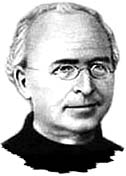 Father Auguste Etchecopar wrote...
Father Auguste Etchecopar wrote...
To the Religious at San Jose College, Buenos Aires,18th June 1882
Dear Fathers and dear Brothers, I am very sure that during this lovely month you are letting the Sacred Heart know the gratitude and pride you feel at the thought of bearing the name of his divine Heart and of being the ministers of his mercy. At the sight of this open wound which is proof of the hidden wound of his love, you must often say to him: "Oh Love! Without beginning, without end and without measure! My poor love of a day longs for you and cries out to you: Here I am! Ecce venio!"...
Growth in Faith and in Life.
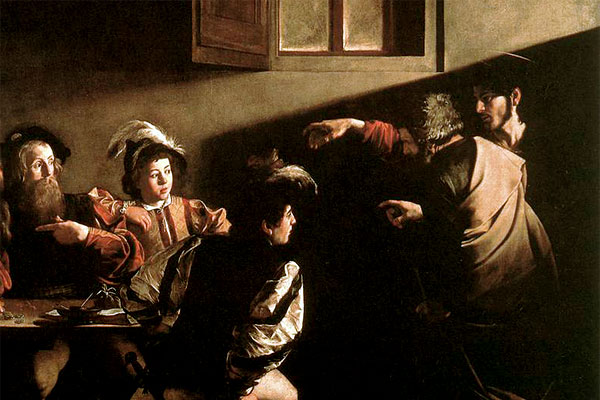
On the 9th May, Mgr Vincent Landel, SCJ, Archbishop of Rabat (Morocco) was invited to Rome to confirm 36 teenagers from the Lycee Chateaubriand, in the church of St Louis des Francais. His sermon, of which we are publishing important extracts, can be considered as a light for the confirmation candidates as for those already confirmed.
The Holy Spirit will come and help you, because the Father will send the Spirit to take my place. The Spirit will teach you everything and will remind you of what I said while I was with you. (John 14:26)
Is it possible to receive a more beautiful gift from the Church, or from the Lord, than the words which we have just heard: My Father will love him, and we shall come to him and make our home with him (John, 14, 23)! Be told that our Father in Heaven will love us how many persons would love to hear such a word of love and will never hear it. Hear that our Father in Heaven will come and make his home with us! Can there be anything more beautiful than to hear that the beloved accepts to come and make his home with me! You would want your house to be very beautiful. To hear it said that we shall come and make our home with him; not to do any old thing but to give fuller meaning to your life! This is what several of you wrote in your letters to me: to be confirmed is not only to be a better practising Christian, but to be at the service of our brothers in humanity!
Dear confirmation candidates, such an expression is the magnificent gift which you are receiving; but it is also a magnificent gift for me, Archbishop of Rabat, and I want to tell you that the Heavenly Father not only loves the handful of Christians that we are, but all men of good will, and especially the Muslims who make up the majority of my diocese. Gods love well and truly knows no bounds... God loves all the Muslims... and what wonderful times I have with them!
As I accept this gift, I want to talk about what you wrote to me in your letters. Practically, you nearly all said that you must become adults in your faith; you were baptised as infants and you are now aware that your lives as Christians are no longer your parents problem but yours, and that actually you need adults to accompany you on your way! Its great to be an adult in your faith but you will only achieve that if, at the same time, you accept to become more and more adult in your own life; thanks to your studies, you are going to acquire important skills, you are going to assume responsibilities, you are going to make choices in life... isnt that much the same kind of action you should be taking in your faith? Your faith life cant be satisfied with Sunday Mass; its in every aspect of your ordinary life, family, social, economic, political that you will have to add your Christian dimension. The Spirit whom you are going to receive will bring you that wisdom, strength, intelligence, and council, to progress as Christian men and women.
You told me about the doubts you have about your lives as Christians; there are times when we ask ourselves questions. Its normal for you as for me. To have doubts is not refusing to believe; its trying to understand better something which today seems mysterious. Dont be afraid of such doubts, theyll help you to grow in faith. The Holy Spirit will bring you the light you are going to need.
It is important not to settle down in our doubts, but to hear Christ saying to us Dont be afraid just as John Paul II and Benedict XVI have repeated. I have no receipts to give you, but when you are assailed by doubts, dont hesitate to pray, look on HIM who loves you; dont hesitate to turn to the Word of God with others. The Gospel is a message which day by day sheds the light which you are going to need, above all if we accept help from others... our elders in the faith are holier than we are, but they can help us to ask ourselves the real questions which will help us to progress.
Several of you spoke to me about a commitment; its true someone who has been confirmed cant just sit there doing nothing, watching a Church and a world in the building process. There are different commitments to be involved in catechetics, scouts, helping the homeless, etc. There is also humanitarian aid, but do it as a Christian. Humanitarian aid is beyond us, but can give such a sense to our lives!
Mgr Vincent Landel, SCJ
Our Lady of Miracles | Our Lady of Betharram
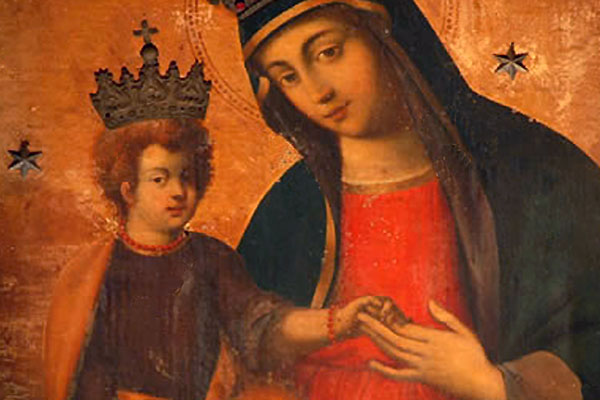
She who rescues from the waters (1)
Although distant in time and space, there are two sanctuaries which hold in common a similar and touching tale, that of a child saved from death by drowning. Part 1: Our Lady of Miracles, Rome, 485 years ago.
C Rome, 20th June 1525. Jubilee year! On the banks of the Tiber piles of branches washed up by the swollen river. In search of fire wood, a poor woman, holding her child by the hand came down the bank near the Ripetta, not far from the Place of the People. While his mother was looking for firewood the child was enjoying himself on the bank. Suddenly he was thrown off balance by a big wave and was being dragged into the river. Realising that her child was going to drown the woman screamed out in despair; in vain there was no one around to come to her help. Instinctively she looked towards an ancient archway in which was an image of Mary holding her son Jesus. She looked at it with eyes full of tears and in a tearful voice cried: Good Mother, save my child.
Just as the child was in danger of being swept away by the swollen river, a beautiful lady appeared to him. The beautiful Lady dressed in white, stretched out her arms to him and pulling the child from the water, placed him on the bank of the river where his mothers cries for help could still be heard. People rushed to the scene only to find the child safe and sound and that the mysterious lady had disappeared. But the child related everything that had happened to him and his mother pointed to the image of Mary whom she had implored.
News of the miracle spread through Rome like wild fire and popular devotion turned the place into a place of pilgrimage: scores of people would go there every day asking for the help of the Madonna who had appeared on the banks of the Tiber. Pope Clement VII had a chapel built to protect the fresco and this was the beginning of the devotion to Our Lady of the Miracles. Furthermore, the little oratory was in a zone endangered by the whims of the River Tiber.
In 1539 the Capuchins were entrusted with the care of the chapel which was to become their first residence in Rome. Meanwhile they began looking for a healthier spot away from the floods. Another caretaker of Our Lady of the Miracles was St Camillus of Lellis. He had started his mission in the nearby St Jamess Hospital and it was in this same chapel that he was ordained priest with four companions and that he dedicated himself to the service of the sick. This was on 8th September 1854, date of the foundation of the Ministers of the Sick, and the simple little chapel naturally became the headquarters of the new Religious Congregation.
However being near to the Tiber was not a good sign. By decision of Cardinal Salviati, the original fresco was taken down and removed to the Church of St James, at that time under construction, leaving only a copy of the Virgin with her Child. Instead of turning towards the Church of St James, the people continued their devotions on the spot where the miracle had taken place. Wonders took place and the reputation of Our Lady of the Miracles spread beyond the town. Next the fresco was transferred to the church of St Ursula, but it was necessary to have a more imposing setting. A magnificent sanctuary was constructed, called Our Lady of the Miracles. Architectural twin of St Mary in Montesanto it too had renowned founders: Carlo Rainaldi, Carlo Fontana and Gian Lorenzo Bernini. Cardinal Gastaldi proceeded with the inauguration of the sanctuary in 1679; since then the miraculous image continues to bear witness to the showers of graces from the maternal presence of Mary.
Giuseppina Sciascia
"Madre di Dio", july 1990
International Session for final profession
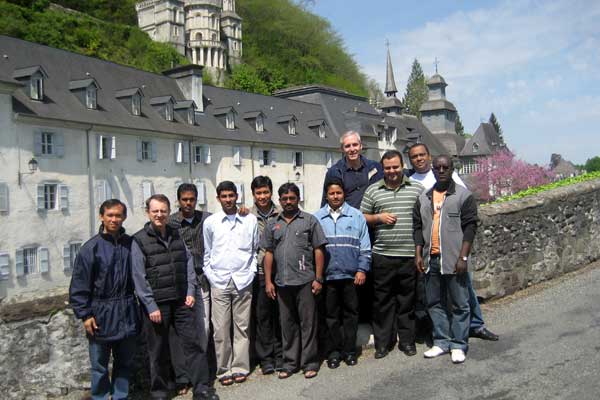
From the 24th April to 21st May I was at the Mother House with the eight young shoots full of energy and promises for the future of Betharram. They represent another eight in the rising generation who not only will assure a heritage carefully preserved and honed by previous generations but will bring a new life style and a new momentum. Opening a new chapter in our history, which though new, is none the less a continuation of the past. For our young religious love and respect our past history. Gustavo Agin,SCJ
I noticed them speaking with feeling about their vocation, about their modals of priests and religious, of their ideal of consecrated and community life. I was able to see them excited about the holy places of our charisma (which they discovered in reality and not simply on photos). They played in the snow for the majority this was something totally new. I saw how they were marked by the Fathers and Brothers who have given their all and who had accompanied them throughout their formation, whether Religious of Betharram or of other religious families, both male and female.
I appreciated their openness of mind, their sense of service and availability for our Elderly Fathers, as well as towards the younger members in the Mother House Community and elsewhere. I benefitted from this for my own spiritual life, somewhat manhandled by the work culture, dried up and thirsty for the Betharramite spirit, and without realising it, for the Love of God.
Finally, I must admit that I have changed my mind about the necessity of my being here at all: whats the point of abandoning a whole Region with its problems and questions, for a whole month? Simply to be with the young religious, to accompany them and drink at the source of our charisma? A few weeks later, and thanks to the internetI can relive those moments shared together... emotion and hope swell to the surface intact.
How good the Lord is for us, Betharramites! For the construction of his Kingdom amidst the poor and excluded, he has given us choice little brothers. They represent new faces and different colours. We didnt deserve all this!
5 minutes with... Father Mario Sosa
The end of the Year for Priests witnessed the arrival in Rome in general and via Brunetti in particular of priests from all over the world; they were responding to the Popes invitation to meet in Rome for a renewal of their priesthood. Amongst these was Father Mario Sosa, Paraguayan by nationality and Betharramite by profession. We wanted to get to know him better.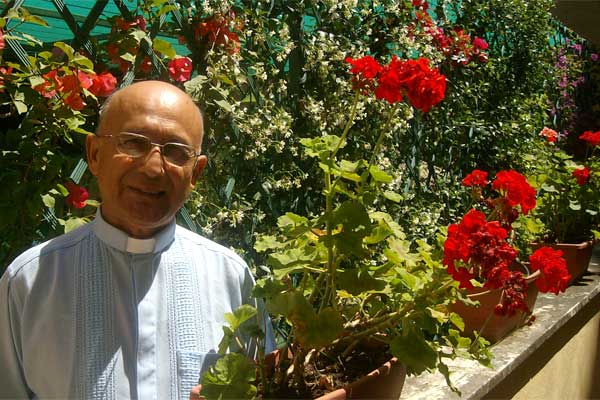
Nef: Could you tell us something about your vocation as religious and priest?
- My vocation, like every religious and priestly vocation is a miracle of the personal love of Christ. He lets us participate freely in his vocation at the call of God the Father. He lets us participate in the generous offering of himself: You wanted neither holocausts nor sacrifices, so here I am, I have come to do your will (Psalm 39). And so it is that in those distant 1950s I entered the seminary at the invitation of an old school mate, more through curiosity than anything else. And funnily enough some time later this same friend who had been instrumental in my first contact with the Betharramite family had left the seminary.
As you reflect on your journey, what does all that mean to you?
- From the summit of my 70 years of age and in this Year for Priests, I thank God for my vocation. I dont regret having followed the path marked out for me by Providence. I feel totally fulfilled as a person, as a Christian and as a priest. I held positions of responsibility in both colleges and parishes, I have had many interesting experiences. In the long run, I feel the joy and satisfaction of someone who has served and who is still serving with love and through love.
What is your ministry today?
- I am back for a second time in the community of the Apostolic College San Jose; my responsibility as chaplain allows me to continue enriching the educational work with the Betharramite charisma, and to live fully my vocation as religious and priest.
In Paraguay Betharram has been very involved in the work of education. What stakes can you see for your country, for the Church and for Betharram?
- Priests from Betharram arrived in Paraguay in 1904 at the express request of the Bishop; he wanted then to look after the education of the youth. In this way he wanted to counteract the secular and anti-Catholic spirit which reigned in state education at the time. Today, more than 5.000 pupils are educated in the five colleges under the care of Betharram in the country. So, the Congregation remains faithful to the mission received from the Church 106 years ago. Education is the principal aim of our presence in Paraguay, but not the only one.
Under what circumstances and why have you been interested in sectarian movements?
- At the time when I was Parish Priest in the Sacred Heart Church in Ciudad del Este in the 1980s I was confronted by this problem. I felt helpless in the face of the spread of sects and the way they were causing confusion in my parish. At the time I was lucky in meeting an old Jesuit priest who had a long experience in the field of sects. On his advice I was able to perfect a simple catechism for adults which was quickly adopted by the neighbouring parishes. When I returned to the Capital, the Archbishop of Asuncion appointed me coordinator of the team for the promotion of the Catholic faith in his archdiocese. Already the final document after the CELAM conference in San Domingo had asked for the people to be instructed about the sectarian problem.
What are you expecting from this international meeting of priests at the end of this special year? What would you say to a young man telling you of his desire to consecrate his life to the Lord? At the end of this chat, what would you like to say to us?
- This Year for Priests has given us a wonderful opportunity to renew our commitment as religious and priests of Betharram. This Church initiative is all the more urgent at a time of crises and scandals as we see now. Besides, the new organisation of our Congregation in Regions and Vicariates encourages us to rediscover our vocation and our religious life, both personally and in community.
- I would tell him that the Apostles never regretted being faithful to their vocation. If this young man received the call, let him go ahead despite difficulties. The aim is good and praiseworthy: forward march, forward march all the time, as St Michael Garicoits would say.
- On the verso of the only ordination card which I have kept you can see: By the grace of God, priest priestly ordination- Father Mario Sosa Gamarra 10th December 1966 Asuncion, Paraguay God chose me undeserving as I was. During my lifetime he has given me the grace of being associated with the vocation of Jesus Christ. I want to thank the Congregation of Betharram for allowing me to live out my vocation of religious and priest. From Rome, city of saints and martyrs, I would like to send this same message to all my Betharramite confreres: Forward march! Forward march all the time!
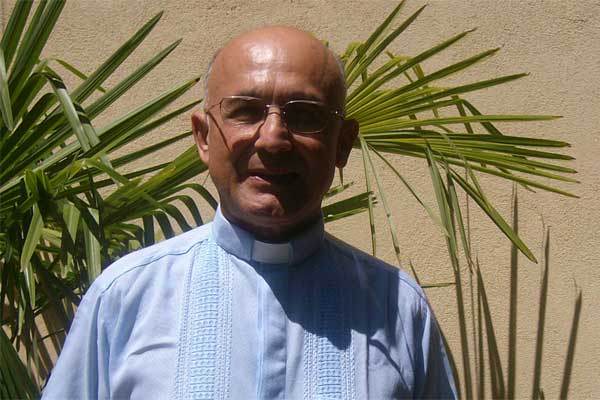
Solidarity Project: India 2010
The project for our mission in India was finalised in September 1995 with the opening of Shobhana Shaakha, the formation centre for the first young Indians some who had already been knocking at the doors of Betharram previously had been housed so far by other religious communities.
Today, Betharram in India is a small group of religious-priests and a more important group of young men on formation. Thanks to the web site Betharram.net which sends us news about our communities, their faces and activities are fairly well known to us.
India is a melting pot of religions. Despite its cultural and religious wealth, India, today, is wounded and is in need of interior liberation. This is how Fr Biju Alappat, actual Superior of Vicariate of India wrote in NEF 22 (2007). He went on to insist: The Betharram mission consists in the revelation of the justice and compassion of God towards the children and the unfortunate, through the choice for the poor, simplicity of life, a personal experience of God, personal holiness and fraternal life. Some programme! What is the situation three years later?
The Indian Betharramites are lodged in two formation houses, a parish which has been entrusted to them, and a whole series of missionary projects (for example at Bidar, in the south of India and in dioceses in the north east.)
In Shobhana Shaakha, our House of Formation in Bangalore, we have the novices (Indian and Thai) of the Blessed Miriam Region and the young postulants. On the other hand, the house in Mangalore receives the students in theology and philosophy as well as students in higher education with a view to obtaining a State diploma.
A new community has just been opened in the diocese of Bangalore to take care of a suburban parish. Three young priests and two young students are having their pastoral experiment in the north-east of the country (in the States of Arunchal Pradesh and Assam) under the guidance of the Missionaries of St Francis de Sales. Last May in Betharram during the session preparatory to Final Vows I was able to measure with what enthusiasm they returned from their training session. Without minimising the difficulties, all stressed such a wonderful experience for their spiritual life, and the possibility of a new missionary field open up there for Betharram. In the month of May the number of religious-priests increased significantly with the latest ordinations passing the number of Indian priests from 6 to 9.
This year the whole Congregation is invited to encourage the brothers committed to the evangelisation in India. Lets leave the summing up to Fr Biju Alappat: God is not asking us to succeed. He is simply asking us to try and take each day as it comes. Our Heavenly Father knows all our needs he watches over our acts and deeds and blesses us abundantly. He doesnt stop at our limits and gently but firmly shows us the way. Lets do all we can so as not to fail in imitating Christ, as we meet and contemplate him in all we meet.
Lets do all we can to support the efforts if the Betharramite Indians by our prayer, and moral and materiel help!
Enrico Frigerio,SCJ
In memoriam | France: Fr. HENRI NADAL, SCJ
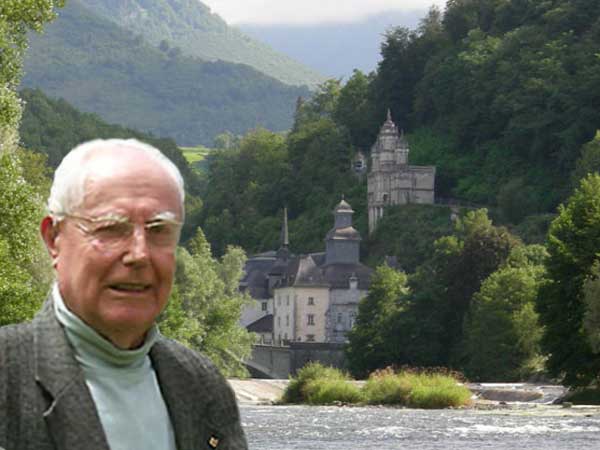
Bayonne, May 22nd 1920 | Betharram, May 12nd 2010
Who was Father Henri Nadal? He was born on 22nd May 1920 in Bayonne to a family of military traditions. He was one of 11 children in a deeply Christian family. On 24th May he was christened in the Church of St Pierre dIrube.
In 1930 he entered Notre Dame de Betharram College. In 1937 he did his novitiate in Balarin, in the Gers and in 1938 left for the Holy Land. He made his final commitment at Emmaus on Easter Monday 1942.
He was ordained priest on 20th February 1944 at the Carmelite Monastery in Bethlehem. In 1946 he returned to France after having done his Military service in Syria in a Christian Brothers School.
On his return to France he had to get used to rapid changes in the domain of Education: at the Apostolic School, at St Affrique College in the Aveyron and at the Ozanam School in Limoges.
In 1942 Fr Henri arrived at the Union des Oeuvres, rue de Fleurus in Paris where he stayed until 1968. He was then appointed responsible of the chaplaincy community at Notre Dame du Refuge, with the Servants of Mary, in Anglet.
During those years it has not been easy to keep up with his apostolic activities throughout France: he took part in different Congresses, Social Weeks; he gave Retreats and Days of Recollection to Priests and Religious. This in no way prevented him from sharing in all kinds of joyful events and bereavements in his family.
In 1976 he was back in the Ozanam College and the Diocese of Limoges where he was Parish Priest in the Parish of St Leonard de Noblat until 1995. And then at the service of the Diocese.
For his final years in activity he divided his time with Pibrac and then with the community of Betharram Sanctuary.
This long trip leaves us with the image of a priest open to all, not sparing his time for formation and spiritual direction.
He lived out the Here I am of the Sacred Heart of Jesus as a true disciple of St Michael Garicoits. His request to carry on his priestly ministry right up to the last few months of his life is proof of his availability nourished by silence, the study of the Word of God and certain spiritual writers, especially Fr Varillon, whom he could propose to others. He could share what he discovered.
For 8 years I lived with him with the Servants of Mary; and I can say that with him if communication wasnt terrible, his fraternal charity was real and deep; his faithfulness was a source of support for the countless people he met during his lifetime.
During the final days of his illness he moved from filial trust to total abandonment to the Will of the Father, making his own the words of Christ: Into your hands, Father, I commend my spirit.
Gaston Gabaix-Hialé,SCJ
In memoriam | France: P. BEÑAT SEGURE, SCJ
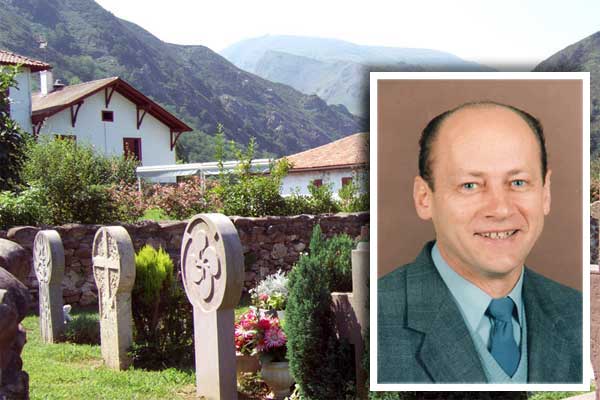
Itxassou, 25 mai 1933 | Bétharram, 31 mai 2010
Father Benat was born in Itxassou the 25th May 1933, in a family of three children. He did his secondary education at Our Lady of Betharram College and his novitiate in Pau. He made his final profession in the service of Christ in 1953.There was a break of 26 months in his philosophy and theology studies for his military service: 4 months in Germany and 22 months in Algeria. This experience made a deep impression on him making him daring and brave.
Afterwards he finished his training and was ordained priest on the 29th June 1967 in Bordeaux. True son of St Michael Garicoits he left for Africa, did a course in Pastoral formation in Haute Volta today Burkina Fasso, before going to Ivory Coast, first of all in Ferkassedougou and then in Katiola where he remained until 1971
He returned to Europe to finish a degree in Spanish. During this time he launched the Mouvement Eucharistique des Jeunes in the Ozanam College in Limoges. With his sporting and fiery charisma he was a role model for countless youngsters. Next he was named Superior for the College-Seminary in Katiola.
From 1979 to 1984 he was Director of Our Lady of Betharram College, then from 1983 to 1990 Director of Etchecopar Centre in Saint Palais. He left for Ivory Coast until 1994 in spite of a heart attack.
From 1994 to 2002 he was member of the Chaplaincy Community with the Servants of Mary at Anglet. Being a man of the high seas, he greatly appreciated the proximity of the sea.
In 2003 he arrived at the Retirement Home in Betharram after a few months in Latin America. Soon after his arrival Fr Benat he took control of the choral in Montaud with his usual enthusiasm and generosity. He would receive the hymn programmes on Monday, and would work at them during the week; he has left countless copy books in which he noted the accompaniment for the hymns.
Every Friday regularly and before the time, he would be in the Church in Montaud for choir practice. Saturdays and Sundays he greeted the parishioners with his usual goodness, and outstretched hand.
On the feast days and birthdays of members of the choral he contributed his usual joy and with a loud voice would let out the cry IRRINTZINA* which echoed far beyond the presbytery walls. On the eve of his funeral, the whole group of the choir came to express their gratitude to Benat. On the day of the funeral they were all there to say that they depended on his support to help them to carry on with such a fine service for the Christian community.
Being some one of good relationship, he was Chaplain to the Basques in Pau Lagunt eta maita (meaning help and love) for ten years and from 2007 he was also chaplain to the Confraternity of the Cherries of Itxassou.
Being some one of good relationship, Benat accepted gladly to greet the pilgrims whenever the Superior of the Sanctuary requested. He was happy helping the pilgrims discover the beauty of the place.
Being some one of good relationship, he could be near to the disabled in the Retirement Home. He had no fear of death, and had prepared his funeral service himself. He was a very lively member of the community right up to the moment of his departure to his Heavenly Father on 31st May, feast of Our Ladys Visitation.
Gaston Gabaix-Hialé,SCJ
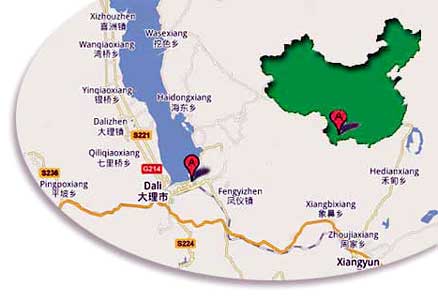 |
4. OUR MISSIONS DURING THE WARby |
At the time of its installation the independent Mission in Tali consisted of 1,281 Catholics. Year by year this number grew slowly but surely: about 1.428, 1.574, 1.739, 2.052, 2.243, 2.400. In 1938, thanks to the conversion of the Lahous, the upward curve shot up to 5.038; in 1938 they were about 11.600 and in 1940 it wasnt far from 20.000 for a population of 5 millions. The Apostolic Prefecture had 16 Priests, 2 or 3 Chinese Priests, 3 Brothers and 7 Daughters of the Cross.
When war broke out in Europe our missions only wanted to continue to develop. Despite the fact that our resources were insufficient for our needs because we were depending on donations from France, we went forward courageously. But the catastrophe which was going to upset all that arrived and what ruins!
The war entered Yunnan with the Japanese Army. The House in Pao-Shan was destroyed in the air raids. Fr Saint Guily and the Sisters who lived there had to join up with the community in Tali. For want of funding all our missionaries suffered terrible privations; they were forced to close down the Junior Seminary, schools, dispensaries, and send home the catechists and teachers since they could no longer pay them (Nef sept 1944).
For want of funding little by little the charitable works disappeared! With the exception of three schools, all the other schools were closed. The catechists left us since we could no longer guarantee their salary. The prep school for entry to the Seminary was closed down. The cost of living was mounting at a terrible rate; and our resources continued to fall at the same rate! A measure of rice which in 1939 cost 0fr80 now cost Frs 2.400 in the space of a month. Cotton which four years previously cost Frs 2.400 was now being sold at Frs 1.600.000. We had to feed and clothe everyone. Things were so bad that at the beginning of 1944 we had nothing left. To try making some economies I sent four missionaries to work in other missions and I begged for help from other missions which were better off than we were.
Our Fathers in the Teng-Yuch region were very sorely tried. They were prisoners in the hands of the Japanese for two years, and spent a month in a real prison; there was the worry of what would happen next; they were at the mercy of the invaders who could easily have sent them to a concentration camp at any moment. If they escaped that fate they put it down to the protection of St Joseph and of our Blessed Founder.
But it was the Fathers in the South who suffered most from the shortages. For two years I wasnt able to provide them with fresh supplies, and so they had nothing. Fearing for their health, I wrote to advise them to join up with Tali, where we would share out what supplies we had while waiting for better times. Here is the reply I received from Fr Trezzi who was living in that region ever since the assassination of Fr Bart: At all costs we must stay with our Christians, and so prevent our Lahous renouncing their faith. I am under no illusion, it is going to be hard; I would dearly love to know which is the lucky country where today the population doesnt know all about the difficulties of life. It is perhaps harder to impose a similar situation on others. And yet there is no choice.
Document Actions






